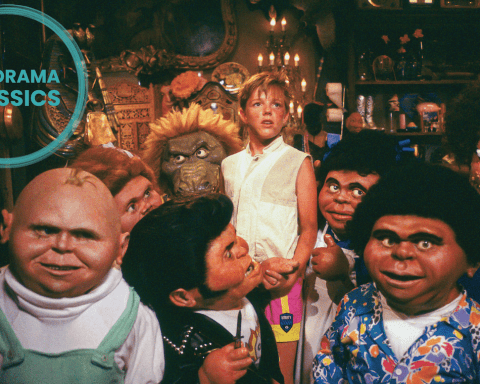BFI Flare presents Making Montgomery Clift.
On the 23rd of July, 1966, Montgomery Clift died of heart failure at his New York apartment, aged 45, leaving us a treasure trove of world-class film and theatre. In the years following Clift’s death, a picture formed of a man struggling with his sexuality, drink and drugs – a tragic character who never fit the mould of the Hollywood system. However, now Clift’s nephew dispels the rumours and whispers with a beautiful and honest exploration of Montgomery’s life and career.
Montgomery Clift began his career as a child actor in theatre, building a diverse portfolio of roles by his late teens. Throughout his youth and early twenties, his passion for theatre would lead him to turn down many early offers from Hollywood, with his first foray into a film not coming until the age of 25 in the western Red River – a film that cemented his potential as a leading man. His gentle and expressive performance as a young Matt Garth challenged the 1940s view of masculinity on screen as he played against the archetype Western male, John Wayne. Clift’s ability to cut through masculine stereotypes of the period would become a defining trait of his career; he would challenge the age-old image of Hollywood masculinity through emotion and sensitivity, pioneering an approach that would continue with Marlon Brando and James Dean in creating a new vision of the Hollywood leading man in a post-war society.

Red River (1948)
Clift took square aim at the studio system that embodied the dated values he rebelled against, his passion for change and evolution leading to his refusal to sign single studio contracts, something unheard of in Hollywood. Clift’s rebellion would lead to individual film contracts, rewriting the relationship between actors and studios. Alongside this, Clift insisted on involvement in screenwriting, allowing him to mould his characters based on his vision. This would ultimately challenge screenwriters and directors, leading many to avoid Clift’s company. However, his challenge of the system would lay the foundation of a fresh approach to filmmaking that, by the 60s, had become the norm. It’s, therefore, interesting that despite his revolutionary role in Hollywood, Clift remains an actor whose name is linked to personal tragedy rather than artistic excellence and transformation.
Using an extensive collection of tapes, home videos and written materials collected by Clift’s brother, Making Montgomery Clift finally celebrates the bravery of a man who refused to become a victim. Dispelling age-old media speculation, Making Montgomery Clift offers us a portrait of a man comfortable with his sexual orientation and his decision to shun the trappings of fame and celebrity – a man who never attempted to cover up his relationships with both men and women over the years, unlike many of his contemporaries. That doesn’t mean there wasn’t darkness. Clift was profoundly affected by the rumours, speculation, and intrusive analysis of his life after a near-fatal car accident led him to use alcohol and prescription drugs to manage his pain. But Clift and Demmon’s documentary balances the darkness with light, celebrating a man who helped change Hollywood through a steadfast belief in diversity, art and performance. Making Montgomery Clift is a beautiful exploration of a true Hollywood giant and a welcome examination of the man, his passion, drive, determination and pride.
Director: Robert Anderson Clift, Hillary Demmon
Stars: Judy Balaban, Patricia Bosworth, Brooks Clift, Edward Clift, Eleanor Clift, Montgomery Clift, Woodbury Clift, Lorenzo James, Mollie Gregory













You must be logged in to post a comment.